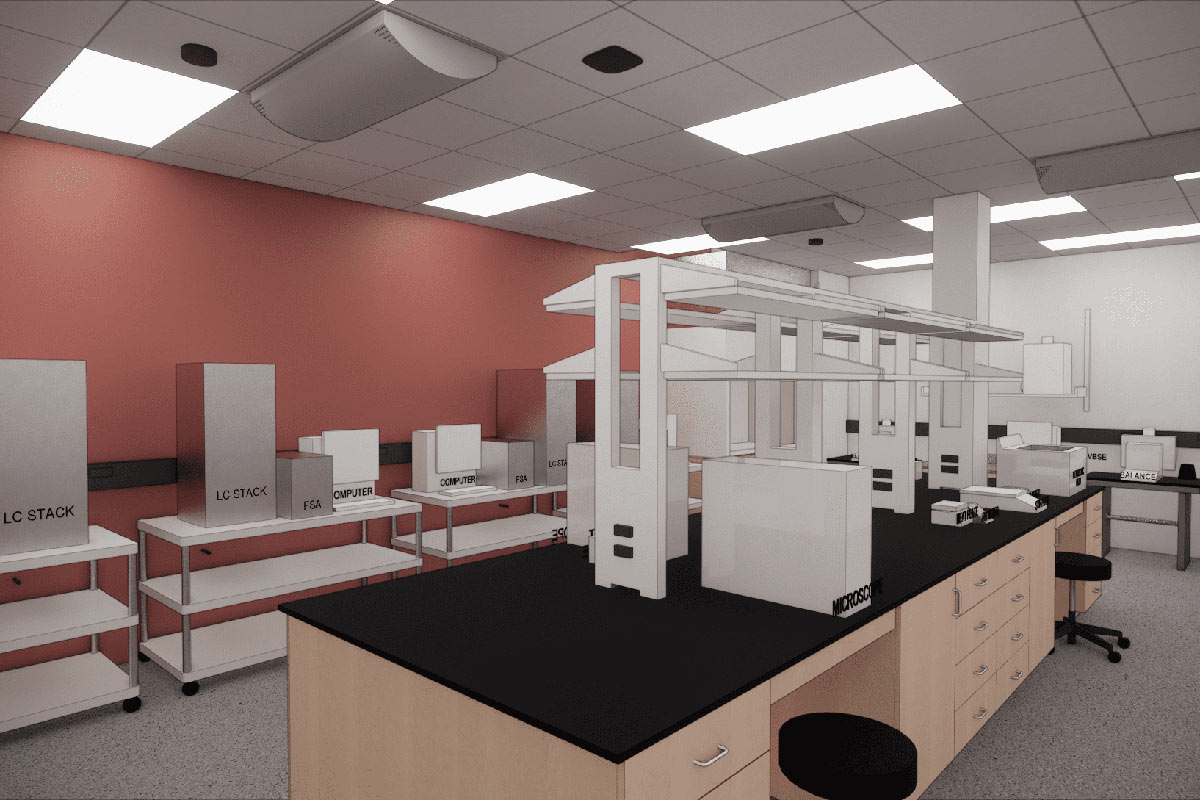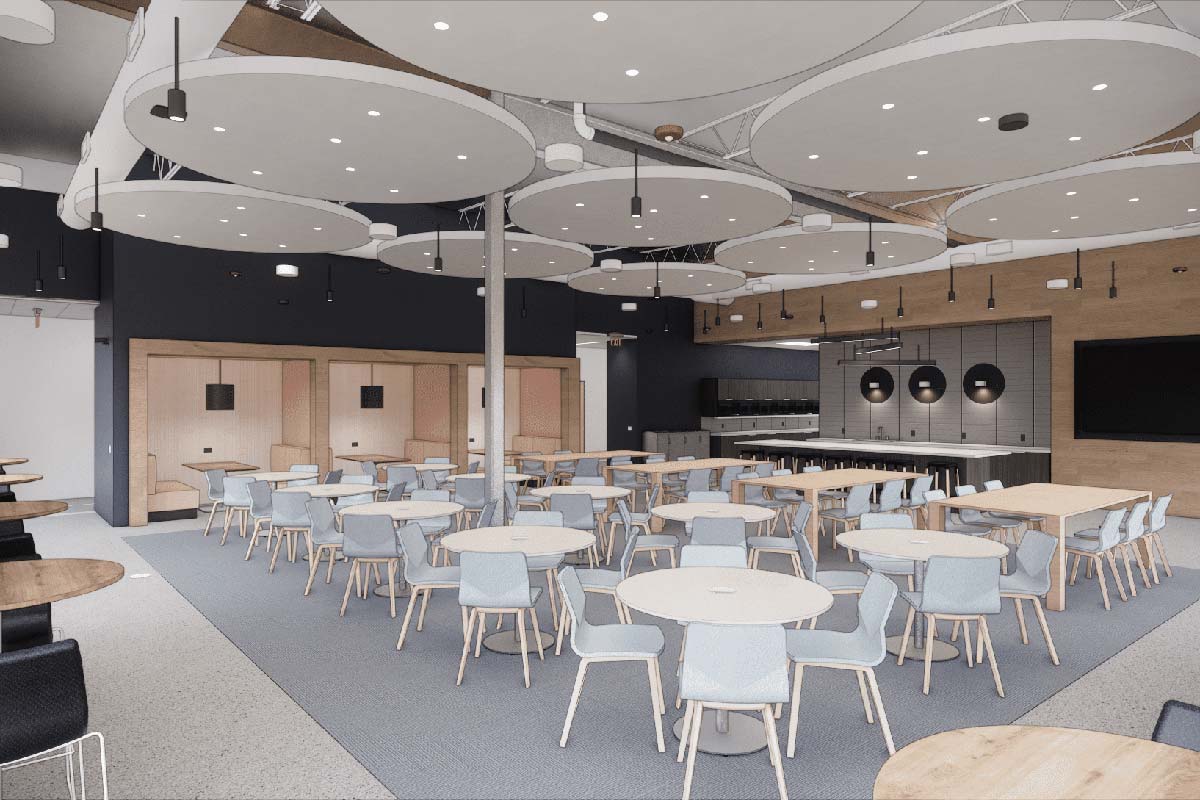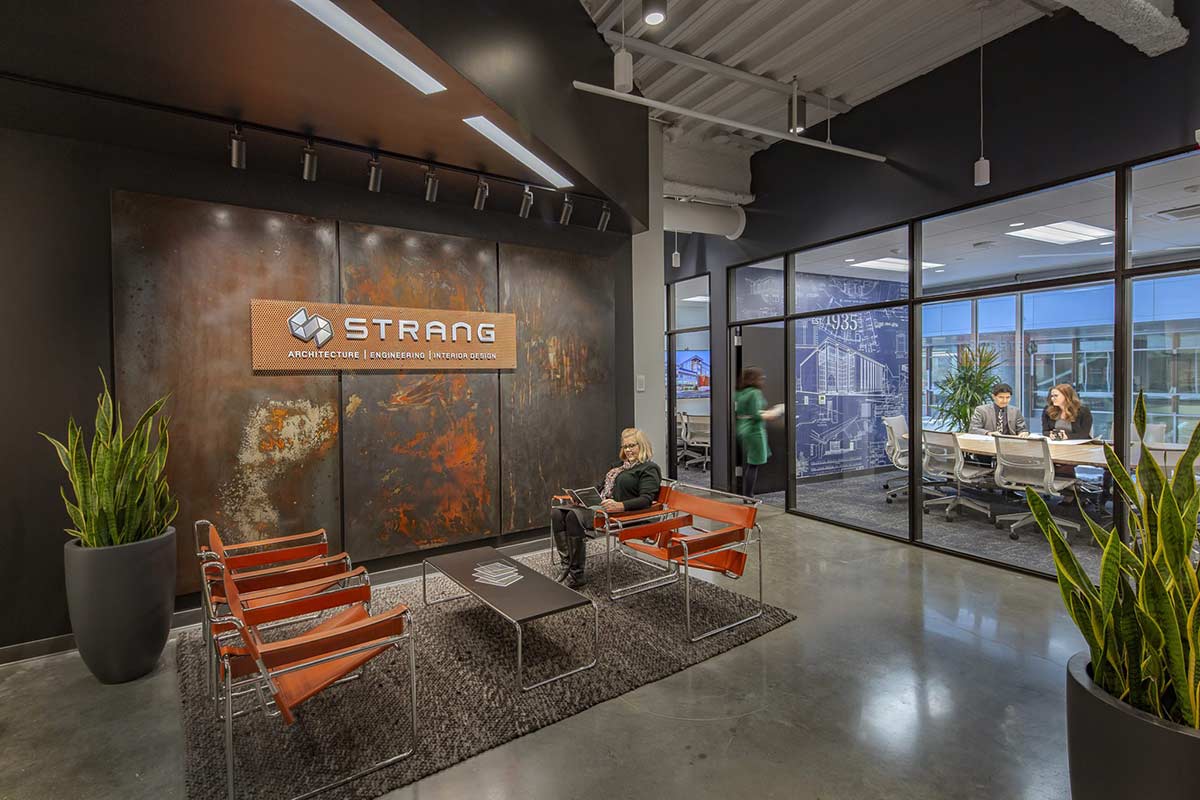GUIDANCE AND DIRECTION
ABSTRACT: Today, we will be sharing several insights and observations regarding the functionality and design of science and research laboratories, whether you are renovating existing space or considering new facilities. This commentary is not intended to serve as another comprehensive “deep dive” into lab design. Sure, we can talk multi-dimensional lab models, nanotechnology, micro chemistry, LIMS software, and automated testing and analysis with the best of them. Rather here, we would like to share our observations and suppositions based upon recent client experiences and offer fresh visions surrounding Science and Technology spaces. Of course, what follows is presented with requisite Social Distancing and necessary precautionary healthcare measures kept at the top-of-mind.
THE TWO FUNDAMENTAL TENETS OF SCIENCE AND RESEARCH
There are almost an infinite number of lab and research spatial configurations today, all depending upon the science and enterprise they support. Regardless of which type of laboratory space you occupy, two things are certain; 1. You will need to adapt to change at an unheard-of pace, and 2. You’re being asked to do more with less. From our experience, these scenarios often overlap and impact one and other.
The responsibility of lab designers, in conjunction with the scientific research community, is to envision, then create lab environments that address current protocols while acknowledging the inevitable transformation of lab technologies. In many cases, these technologies require a growing array of complex equipment. This means scientists and designers alike must recognize current – and anticipate future – user interface with this equipment. Equipment location, unique installation requirements, mobility, utilities, and certainly operational flow will all impact design and layout. The days of spontaneous placement of equipment on benchtops have ceased. The development of equipment is a very real challenge to address.
Your Lab And Corresponding Spaces Should Empower Opportunity Rather Than Become Entangled Within Obsolescence
For many of us, the future is in flux. Space planning studies should recognize the increasing importance of acclimatizing interdisciplinary sciences across (seemingly) divergent disciplines. i.e. computational life sciences. Such cross-functional research may not be part of your lab’s current charge, but are you agile enough to pivot if required? And while “interdisciplinary sciences” may not be your pivot, rest assured other such challenges will come your way. As sciences advance to new levels of study, there will continue to be a convergence of disciplines looking towards each other for potential synergies and innovative discoveries. Collaborations will increase across the sciences just as they do among researchers in the lab. For most of us, how we perform our work today is demonstrably different than say, 5 years ago. Imagine the changes your lab will go through over the next 5 years. Our advice? Be prepared to adapt.
Also consider how we will redefine science-specific lab space. Ever-changing methodologies, advanced lab and production equipment selection and placement, AI and an emphasis on lab automation will continually reshape most operational aspects within your lab. This is a global movement, based upon lean practices that amortize and utilize resources to their fullest potential. How do we achieve maximum results with finite resources? The goal is to create real tangible value across all aspects of your lab.
And here too exists the convergence of science and commerce. Beyond your team’s collective scientific expertise and intelligence, you must address budgets, profitability, “customer” satisfaction, and staff recruitment and retention – to mention a few. These performance indicators will largely determine the ongoing viability and justifiable ROI of your facility. Having flexible, adaptable laboratory space allows employees to do higher-value work mindful of productivity and the bottom line.
Yes, such highly adaptable configurations are challenging. Yet inherent within every challenge lies solutions, answers, and insights. Isn’t that part of why you were drawn to scientific research in the first place? Together, we can accurately and realistically assess and evaluate your lab’s constraints and potential possibilities.
COLLABORATION AND CONCENTRATION
We look to place private and academic scientists within ultra-flexible, open lab spaces which galvanize effective collaboration on a consistent, scalable basis. These Collaboration Locations consist of mobile modular enclaves with secure IT support, whiteboards or write-upon surfaces, highly reconfigurable and mobile casework, furnishings, and sufficient surface space to interact with 3D models.
Within these adaptable spaces, we are entering an era of unprecedented third-party collaboration where academia and private industry are joining forces (and resources) to address important scientific and medical challenges. From drug discovery and development, animal health, food & agriculture, cellular & gene therapies, to nanomaterials, plus medical and applied genomics, many leading life sciences firms, pharmaceutical facilities, and testing laboratories are locking arms to find solutions to our world’s most challenging healthcare issues. Entirely different worlds are becoming increasingly interdependent. Will your lab seize the opportunity?
Here, laboratorians and researchers coalesce around the concept of Team Science within socially driven space where connection advance the health and wellbeing of humankind. To be effective, such interactions require intelligent spaces that go well beyond the traditional “War Room” mindset. These are technology-rich spaces empowering both scientific collaboration and commercialization like never before. This scenario plays out within adjacent offices or meeting spaces.
Consider too the need for heads-down, Quiet Quads where contemplative thinking is given space to flourish. Collaboration is great, but sometimes you simply need a calming place to work through computations or return a call. Our experience and research show that these heads-down spaces are some of the most highly sought-after locations by staff and recruits alike. There are a myriad number of such space configurations, all with social distancing and occupant’s health in mind. We can guide you through what makes sense for your space, budget, and colleagues’ needs.
UTILIZE USEABLE SPACE TO THE HIGHEST DEGREE POSSIBLE — THE LEAN APPROACH
Real estate can be, well, pricey. Labs of all kinds seek to optimize lab space by streamlining operational flows, functional adjacencies, and sequencing – all of which require fewer steps and less space. If developed correctly, this approach can advance procedural efficiencies and optimize the full volume of the lab. This leaner approach isn’t necessarily a bad thing, but it will require scientists, architects and engineers to thoroughly evaluate how each lab and corresponding workstations are set up. Keep in mind that ever-changing regulatory requirements, codes, and industry standards from the EPA, FDA, USDA, and local government bodies must always be adhered to.
Also, budgets saved on real estate can ultimately be reinvested in the science itself. This capital can lead the way to developing new products and services which will strengthen the organization overall.
FROM BENCHTOPS TO LAPTOPS
Let’s be smarter about the lab’s layout and aligned IT infrastructure as it relates to automation advancement and computer-based experimentation and analysis. Keep in mind that consumables, reagents, and benchtop equipment must comfortably coexist with laptops, tablets, and smart phones. In wet labs, IT equipment should be located away from spill zones that require significant electrical and data wiring. Avoid the temptation to place IT equipment “right on the bench”. That’s just like running with scissors – all fun and games until someone gets hurt. One thought to consider is vertically oriented, stackable carts which isolate the communications / data equipment and allows for greater mobility. Win, win. And such IT mobility will also aid optimal workflow and clinical throughput. Win.
GO WITH THE FLOW – AIR, DATA, ELECTRICAL, WATER
Our recommended approach for lab and research space design hinges on adaptability and versatility. This theme is equally applicable to the planning and design of engineered systems. HVAC supply and exhaust air, water, electricity, voice/data, vacuum systems, and other electrical and plumbing decisions must constantly adapt to keep pace, and even stay ahead of your lab’s changing requirements.
It’s important to determine if your facility requires “clean power,” isolated power, UPS, special grounding, or unique voltages. Emergency/Standby power is important for science-based projects in which power loss could impact thousands of dollars of product or research. Image a Freezer Farm space that retains over a million dollars’ worth of samples not on a back-up power resource. Can you take that chance? Water quality also is vital on projects that require highly purified water. We also research effluent requirements before planning how lab waste is treated before it leaves the facility.
And because laboratories often utilize 10-12 times more energy than a typical office building, our designers investigate energy consumption, environmental controls, and energy modeling. This creates a plan that will conserve resources – environmental, financial, and human.
ABOUT STRANG
Strang has been in business 85 years. For over the past 35 years, Strang has been responsible for designing millions of square feet of new and renovated lab and research space. Our team’s expertise encompasses facility design and engineering for leading life sciences firms, pharmaceutical facilities, and testing laboratory clients across the nation. We have guided multinational organizations and entrepreneurial startups. And we have significant experience with long-term, repeat clients in biosafety level facilities, vivariums, cell and tissue culture environments, reagents, consumables, and information technologies.
At Strang, we practice a proprietary lab planning and project management process entitled Design Synchronicity. To learn more, visit our website or contact us directly. We would sincerely enjoy speaking with you. We love to learn.


















